EXHIBITION CATALOGUE | Elizabeth Osborne: A Retrospective
September 8, 2022 - Berry Campbell
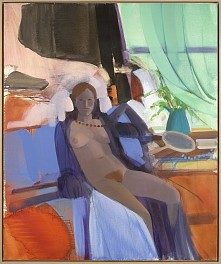
September 8, 2022 - Berry Campbell
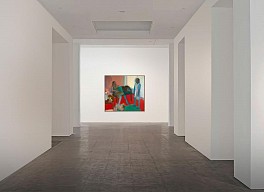
August 30, 2022 - Berry Campbell
After nine successful years on West 24th Street in Chelsea, Berry Campbell is excited to announce that we will be moving two blocks north to a new expanded gallery space on West 26th Street.
Berry Campbell will begin the transition to its new space at 524 West 26th Street on September 1, 2022. We are honored to be moving to this pedigreed location that has previously been the home of the prestigious Paula Cooper Gallery and Robert Miller Gallery.
The new Berry Campbell, which will boast a total of 9,000 square feet, will support the continued expansion of our exhibition program and allow us to better serve the evolving needs of both our clients and the artists and estates whom we are fortunate to represent.
Our new location houses 4,500 square feet of exhibition space, including a skylit main gallery and four smaller galleries, as well as two private viewing areas, a full-sized library, executive offices, and substantial on-site storage space.
We first launched Berry Campbell in 2013 with a collaborative vision to emphasize the contributions of the many postwar and contemporary artists who had been left behind due to race, gender, and/or geography. In 2015, we doubled our exhibition space to its current size of 2,000 square feet.
Reflecting upon these past nine years has left us tremendously grateful. We maintain a well-curated roster of thirty-four represented artists and estates with a rich secondary market program.
Over the years, Berry Campbell has held eighty-one exhibitions and countless focus shows as well as collaborated with museums and curators both domestically and internationally. Further, Berry Campbell has successfully placed works in private, corporate, and museum collections, and has fostered relationships with collectors, curators, educators, institutions, press, other galleries, and the general public.
We are also proud to have been recognized and reviewed in many respected publications such as Architectural Digest, Art & Antiques, Art in America, Artforum, ArtNews, The Brooklyn Rail, The Hopkins Review, Huffington Post, Hyperallergic, East Hampton Star, Luxe Magazine, The New Criterion, The New York Times, Vogue, Wall Street Journal, and Whitehot Magazine of Contemporary Art.
Berry Campbell is pleased to announce that it will inaugurate its new space with a retrospective exhibition of paintings by Elizabeth Osborne, opening with a reception on Thursday, September 8, 2022, 6 to 8 p.m.
The final exhibition at our current West 24th Street gallery will feature recent paintings by Eric Dever. The opening reception is scheduled for Thursday, September 15, 2022, 6 to 8 p.m.
We are excited to be able to share this news and begin this new chapter of the gallery. We look forward to welcoming you to our new space this fall.
With gratitude,
Christine and Martha
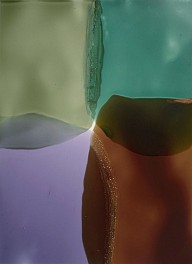
August 30, 2022 - Museum of Fine Arts, Houston
The third installation of the Prints & Drawings gallery in the Nancy and Rich Kinder building opened to the public on January 7, 2022. This gallery highlights modern and contemporary works from the Prints & Drawings collection.
The Nancy and Rich Kinder Building is dedicated to the Museum’s international collections of modern and contemporary art. The soaring spaces feature displays that span media encompassing painting and sculpture, craft and design, video, and immersive installations. The wide-ranging collection of Prints & Drawings are on view in gallery 207, split into four sections. Objects in the first section, “After Dark: Night at the Turn of the Century,” show artists’ responses to the aesthetic possibilities and shifting cultural connotations of night; those in the second, “Drawn to Color,” represent works on paper by Color Field artists and others who explore the expressive potential of color. The last two sections include “Meticulous,” which highlights works featuring repetitive, accumulative mark-making, and “Celebrating Tamarind Institute at 62,” and installation of lithographs produced by women artists at this important workshop from the 1960s to today.
The second section showcases works on paper by twentieth-century Color Field artists, as well as contemporary artists influenced by the movement’s embrace of pure color as a vehicle for expression. Using a diverse array of media, including oil, acrylic, watercolor, ink, and pastel, the artists in “Drawn to Color” produce abstract compositions that engage in varied ways with color’s evocative potential. Works by seminal figures such as Mark Rothko, Sam Francis, and Helen Frankenthaler hang alongside ones by living artists like Terrell James and Emmi Whitehorse, illustrating the continuing legacy of the Color Field movement and expanding the scope of its canon.
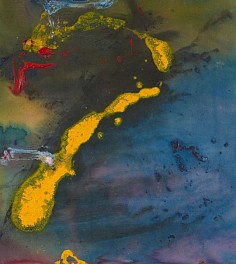
August 25, 2022
This week, we sat down with Bentley Brown, artist, curator, and art historian, for an intimate perspective on the work of his father, Frederick J. Brown (1945–2012), whose art joined the MFA's collection earlier this year. We loved Brown’s wide-ranging, galaxy-inflected paintings when we saw them in New York at Berry Campbell gallery last fall and we’re thrilled to share with you a little about his art here.
The acquisition of Brown’s work formed an integral part of an initiative to broaden the narratives of abstract painting the MFA's collection can tell, made possible by Elizabeth and Woody Ives and in recognition of their critical contributions to the contemporary collection over decades. We are indebted to their support and generosity.
---
We know and admire Frederick J. Brown’s practice, but how would you describe it in around three sentences or so?
Fred Brown is an American painter whose work included abstraction, figurative expressionism, and portraiture. Born in Greensboro, Georgia and raised in Chicago, he drew from sources rooted in African-American culture in a practice of visual storytelling that sought to highlight mastery present in the Black communities in which he was raised. A lot of his motivation stemmed from the desire to see Black culture be venerated as a foundational part of American culture and the avant-garde. Brown came to prominence as a pioneer of New York’s downtown art scene of the 1970s and ’80s; his loft at 120 Wooster Street was a center for that scene, modeling itself after loft jazz alternative spaces.
The MFA recently acquired Brown's painting, Untitled (1972). Could you share a little about its place in your father’s work?
When my father was making this piece he was living on the Bowery, having lived at jazz musician Ornette Coleman’s loft for a brief period. During this time he was exploring techniques in enriching color, creating depth through staining, and creating textural and sculptural qualities. My father was developing this work alongside fellow painters Frank Bowling and Daniel LaRue Johnson, who were exploring similar questions to push the boundaries of abstraction. They and others working in this vein wanted to see how far you could push the materials, to create work that was all-encompassing, that could reflect feeling and tell a story.
Our team was fascinated to learn about Brown’s work for the Adler Planetarium in Chicago. Could you tell us a little about that?
In 1971, my father began a correspondence with the Adler Planetarium. He wanted to create depictions of the Milky Way galaxy and wanted images as a reference point; the image of the galaxy remained a constant throughout his abstract work. He and the Planetarium staff stayed in contact throughout the 1970s; his painting Milky Way (1977) is on view there today. An important part of this was that the Adler Planetarium pictured the stars from the perspective of Chicago’s night sky. Today in Chicago it's almost impossible to see the stars, and that's a huge part of this series, my father as a young man in Chicago (and New York) imagining, dreaming of and for stars.
Anything we missed?
I’d like to expand a little on my father’s influences. In Chicago he was in the middle of all of these incredible focal points of Black music: blues, gospel, avant-garde jazz. Music was really a vector through which my father created his work. It was the musicians that brought my father to the Downtown New York scene.
Family influences shaped his aesthetic sensibilities, too. He cited my grandmother’s work as a Venetian pastry chef as a great influence. He would say that the paint had to be thick like the frosting my grandmother would make. The steel mill was another influence: his stepfather worked there, and my father did too for a period of time, as a safety inspector. The bright oranges and yellows of the smoldering metal and ingots appeared in so many of his works including the Untitled work acquired by the MFA.
Are there any artists, writers, or others working in the arts –– past or present –– whose work you would like to share and make readers aware of?
I’d like to list the creatives who were a part of the 120 Wooster Street Collective my father founded and its milieu. It is my duty to share this knowledge, to continue to say my father’s name and the names of all of those he labored with, because so easily we forget the immense contribution of Black artists in forging new points of access for creation and creativity.
Visual artists
Daniel LaRue Johnson, Virginia Jaramillo, Anthony Ramos, Frank Bowling, Bill Hutson, Gregoire Muller, Edvins Strautmanis, Algernon Miller, Ellsworth Ausby, Joe Overstreet, Al Loving, Ed Clark, Peter Bradley, Gerald Jackson, Jack Whitten, Romare Bearden, Willem De Kooning, Kapo, Milton George, Anthony Barboza, LeRoy Woodson, Ralph Gibson, Frosty Myers
Multidisciplinary artists
Malcolm Mooney, Megan Brown, Felipe Luciano, Gylan Kain, Claude Lawrence, Jean-Claude Samuel
Musicians
Anthony Braxton, Henry Threadgill, Art Ensemble of Chicago, Kunle Mwanga, Ornette Coleman, James Jordan, Revolutionary Ensemble, James “Blood” Ulmer, Charlie Haden, Sam Rivers
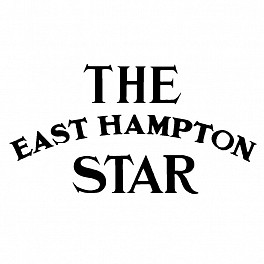
August 11, 2022 - Berry Campbell
Berry Campbell: Community
August 11 - 14, 2022
Berry Campbell at Ashawagh hall
780 Springs Fireplace Road
East Hampton, New York 11937
Preview Exhibiton
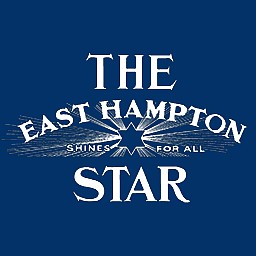
August 11, 2022 - Mark Segal for East Hampton Star
Chelsea to Springs
Chelsea’s Berry Campbell Gallery takes over Ashawagh Hall in Springs from today through Sunday with a large group exhibition of artists, past and present, with strong East End connections.
The show includes works by Mary Abbott, Alice Baber, Nanette Carter, Dan Christensen, Eric Dever, Elaine de Kooning, Perle Fine, Grace Hartigan, Raymond Hendler, John Opper, Charlotte Park, Betty Parsons, Mike Solomon, Syd Solomon, Hedda Sterne, Susan Vecsey, Lucia Wilcox, Frank Wimberley, and Larry Zox.
Gallery hours are today through Saturday, 11 a.m. to 7 p.m., and noon to 6 on Sunday.
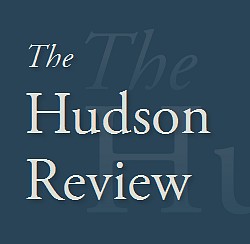
August 6, 2022 - Karen Wilkin for The Hudson Review
Nanette Carter: Destabilizing #3, 2022. Oil on Mylar, 61 x 71 1/2 in. (154.9 x 181.6 cm)
Excerpt from "At the Galleries by Karen Wilkin"
Also in Chelsea, Berry Campbell Gallery showed “Nanette Carter: Shape Shifting,” recent works that, like Loving’s mixed-media collages, ignore the traditional rectangle and traditional materials, while making their physicality and material presence crucial to their meaning. That similarity is not surprising. Loving was the much younger Carter’s close friend and a mentor. Yet despite her clear connection to the vibrant tradition of African American abstract art—she shares with Loving and Gilliam, for example, a faith in the expressive possibilities of process—Carter investigates terrain all her own. Her stubbornly abstract images are highly charged, like metaphors for things we can’t quite grasp. She exploits the way oil paint sits up on Mylar to invent seductive striations and scrapings, creating a distinctive palette of textures that modulates a range of blacks, greys, off-greens and blues, sparked with ochre and occasional hits of ultramarine. The most ambitious, largest works on view, Destabilizing #1 (2021) and Destabilizing #3 (2022), appeared to hover, unconstrained, against the wall, their overlapped shapes and bars seemingly coalescing only momentarily. We saw through parts of their configurations, so that the wall itself became part of the equation. In Destabilizing #1, a stack of emphatic black bars floated free of the piled image to claim new visual and spatial territory and pose interesting questions about illusion and object. Other recent wall-mounted works depended on openwork structures, like constructed sculptures or ritual objects, unhampered by concerns about support. Loving’s and Carter’s exhibitions briefly coincided, offering a fortuitous opportunity to explore the evidence of both resonance and independence in the work of these inventive colleagues and friends. Continue Reading
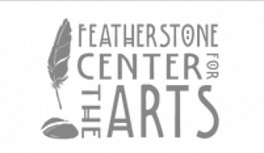
August 4, 2022 - Featherstone Center for the Arts
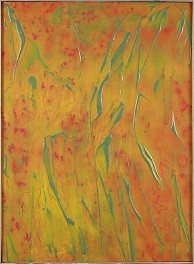
July 25, 2022 - Michael Wolf
Walter Darby Bannard at Berry Campbell
Berry Campbell presents the work of Walter Darby Bannard, a leading figure in color field painting in the 1950s. In “Vanadium,” Bannard emphasized the opticality of the painted surface, applying gesso with a squeegee leaving fine ridges. Thin layers of light green and ochre were poured and allowed to settle in the creases.
In “Glass Mountain Fireball,” Bannard’s liquid paint technique sees orange and yellow tints wash over green underpainting. While many artists are secretive about their methods, Berry says that Bannard freely explained his process, confident that other artists “aren’t going to be able to do it.” Having been the head of the painting department at the University of Miami, we can assume his claim was accurate.

July 20, 2022 - Museum of Fine Arts, Houston
Jill Nathanson
Breath Woven 11, 2019
Acrylic and polymers on Yupo paper
24 12 x 18 inches
Collection of Museum of Fine Arts, Houston
View Works by Jill Nathanson